-
How to divide plants: splitting herbaceous perennials the easy way
 Lee Burkhill: Award Winning Designer & BBC 1's Garden Rescue Presenters Official Blog
Lee Burkhill: Award Winning Designer & BBC 1's Garden Rescue Presenters Official Blog

Long before online shopping and plants by mail, splitting and dividing plants was one of the best ways of propagating your garden plants. It's also been used for years as a way to help share and spread plants amongst communities without having to grow new plants slowly from seed.
Furthermore, by getting down and dirty when dividing plants, you really understand how your plants grow and their preferences!
Herbaceous perennials are easily split and multiplied via division. They usually form a set of fibrous roots which can be easily divided or cut to form a new set of identical plants. The herbaceous perennials are plants that come back year after year and die back to the ground at the end of each growing year. For other shrubs, trees and plants that don't follow this cycle, you may need a different method for propagating them such as via a cutting or by sowing seeds.

Rudbeckias above are super easy to divide for a riot of colour!
Here are a few common examples of herbaceous plants that can be easily divided:
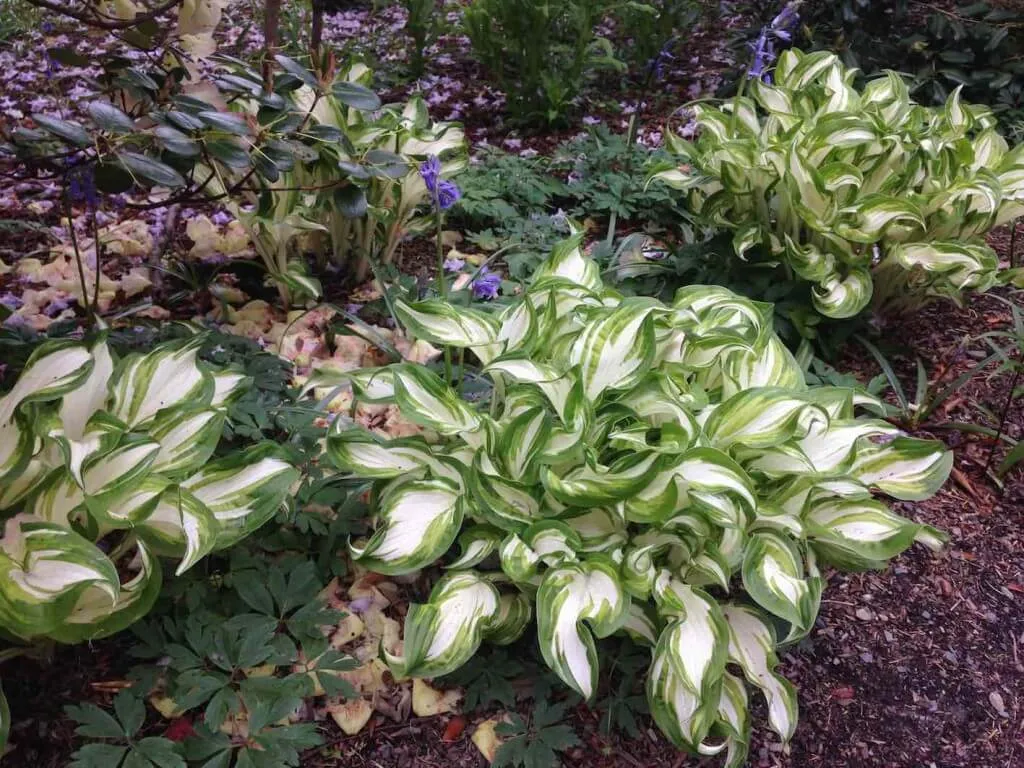
The first obvious answer is that dividing plants helps multiply the number of potential plants you have in the garden. Rather than one plant reaching maturity and sitting there lazily, and it encourages multiples of this parent plant to spread out and help provide even more interest in your garden.
If you've read my other planting guides, you will know how repetition in flower bed planting schemes is key. Splitting and dividing plants is a cheap way to do this at home without spending a penny!
Dividing plants also helps to keep herbaceous perennials in far better health. It helps stop them from becoming unproductive (where plants may become lacklustre or show a reduction in the flowering capacity year on year) as it encourages vigorous new regrowth in plants. So it really is a win-win.
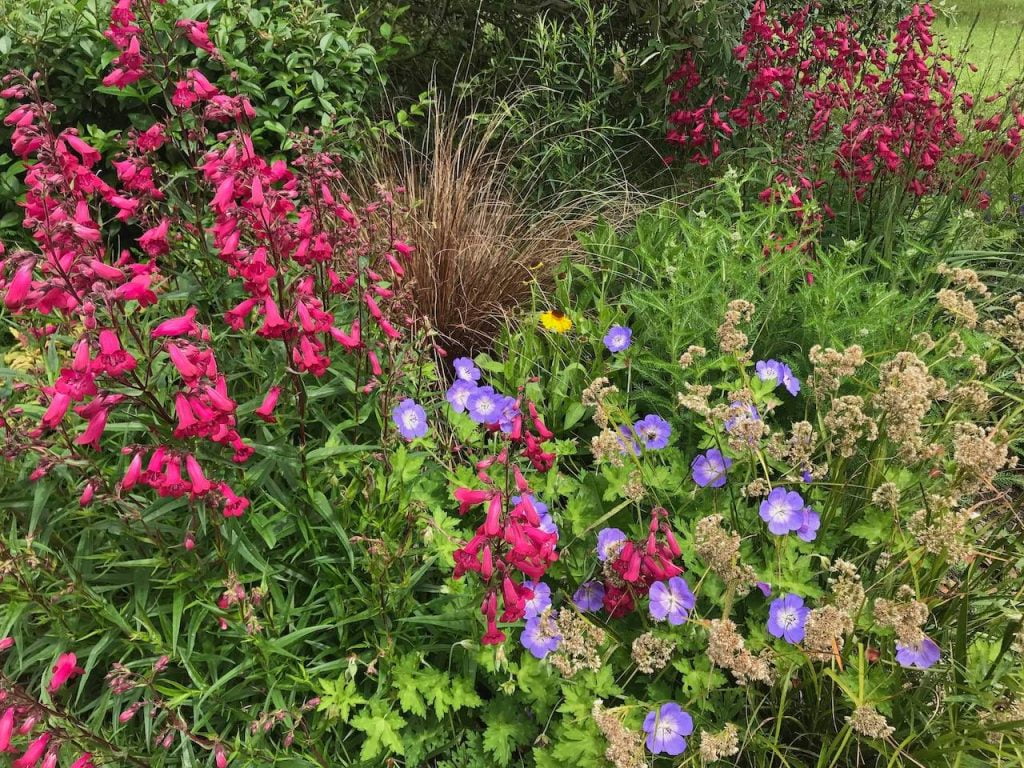
All of these beauties can be easily divided to create more plants for free!
Dividing plants is not as daunting as you may think. You will need the following equipment to divide plants easily.
The first thing to do is loosen the soil around the plant you want to divide. I always dig a good 3 inches or so wider than the base of the plant as the roots will spread out far further than the plant. Take your time and work around the herbaceous perennial.
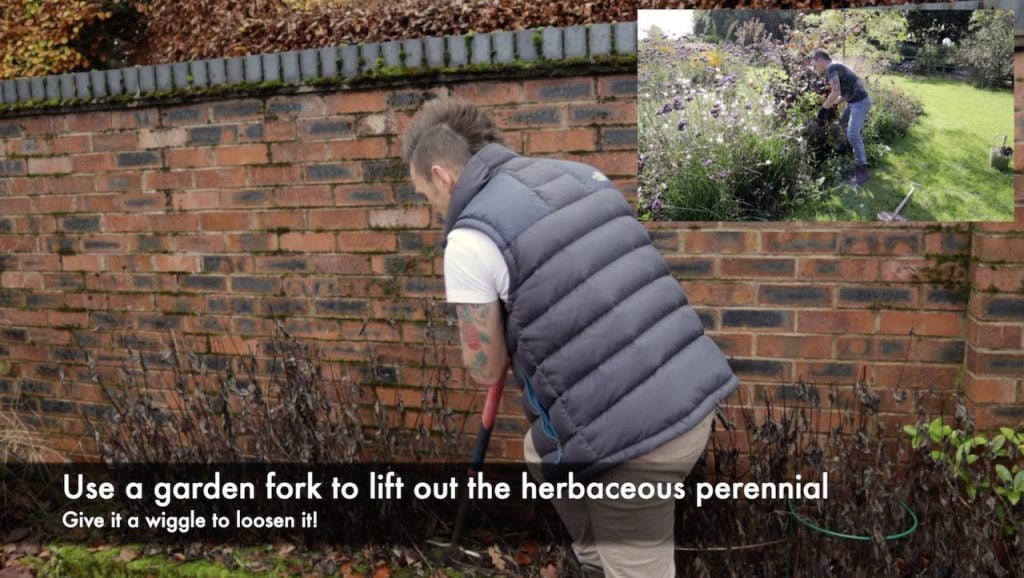
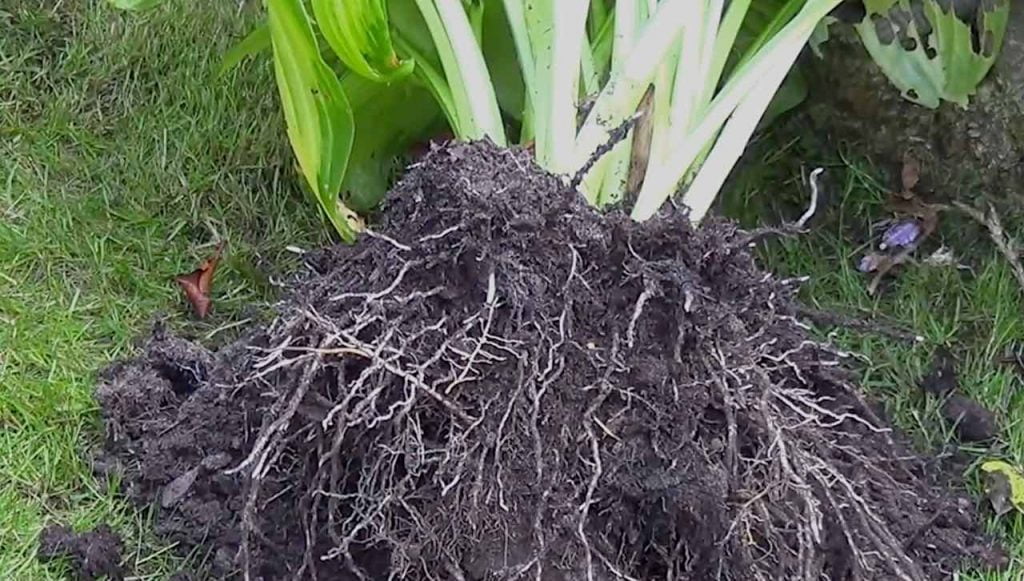
This hosta is best divided with a spade than by hand; it's quicker and cleaner for the plant.
Have a good look at the root structure. Is it congested and knotted, or relatively easy to loosen? If loosening is easy, you can carefully pull and tear the plant apart. The aim is to divide the plant either using your hands, a sharp knife or even a spade if it's got a thick crown like a Hosta or Ornamental grass.
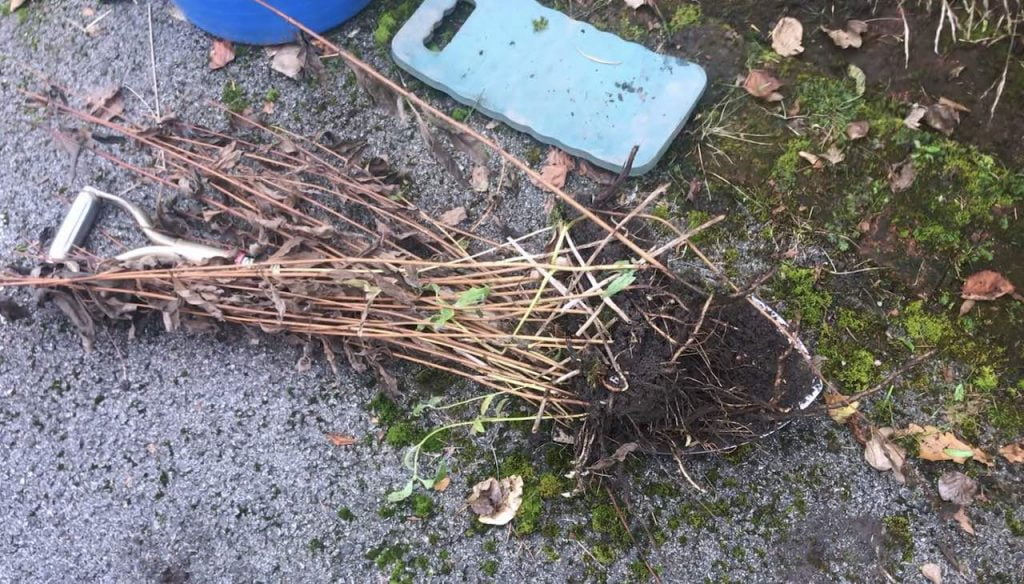
These Rudbeckia above have relatively loose roots, so dividing them by hand or with a sharp knife is easier.
This means the plant focuses all its efforts on new roots and doesn't waste energy on foliage production or excess transpiration (the process in which plants uptake and lose water).
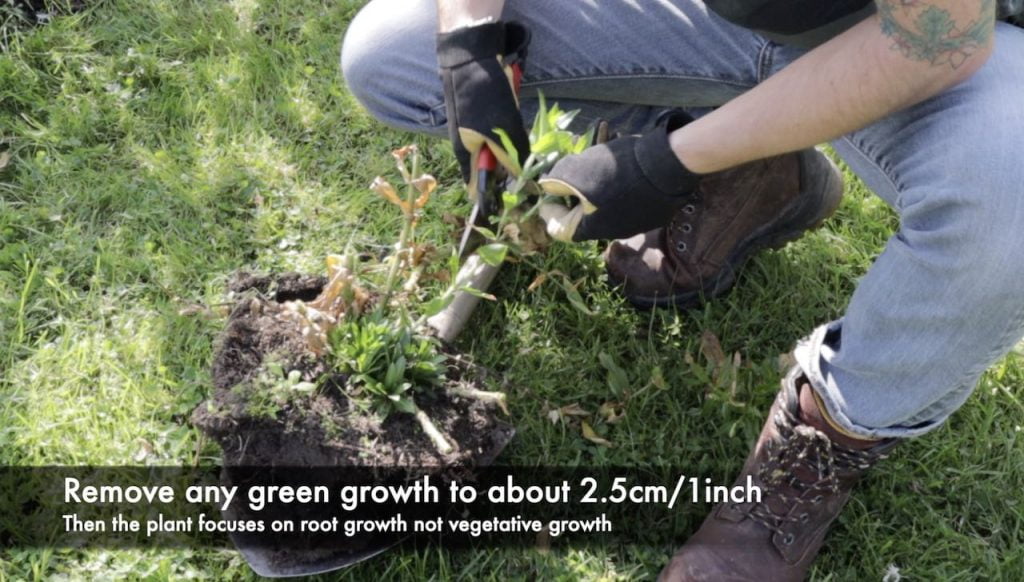
You may be surprised at how little you need to create a new plant. The smaller the division, the longer the new plant will take to establish and fully reach its ultimate width and height. With most plants, I tend to choose a root ball that sits neatly in my palm. This ensures a good, healthy division for the plant's regrowth. For most hardy Geraniums, you can be really thrifty with tiny parts of the root, but the plant will take longer to establish.
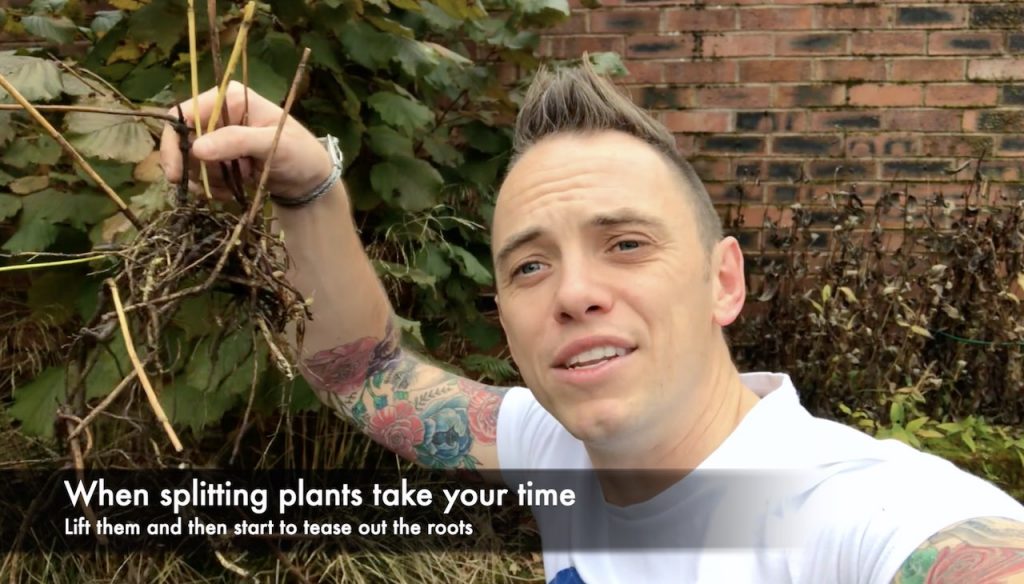
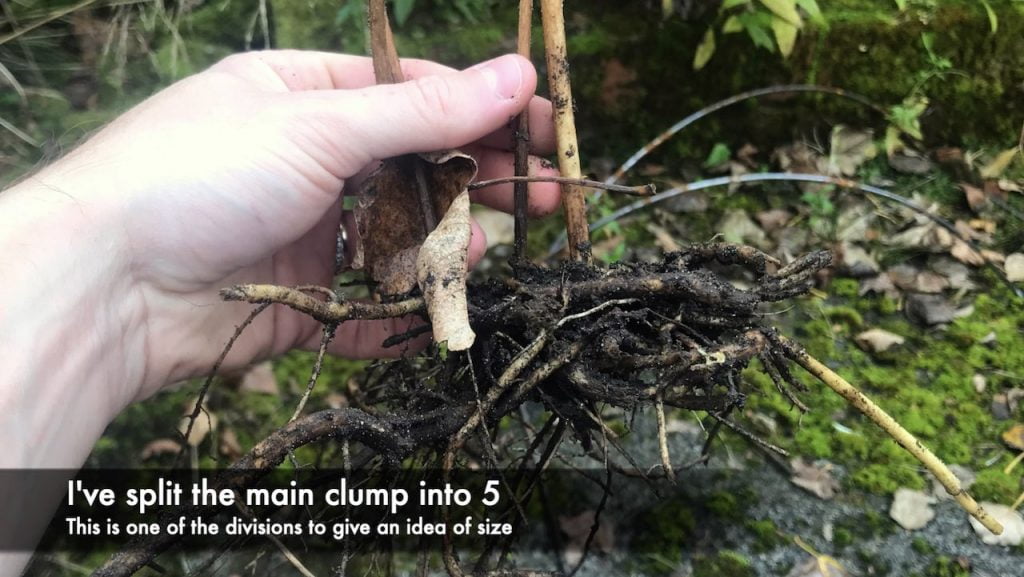
You then need to thoroughly water them in. Even if the ground is wet, label these new plants so you know exactly what they are next season, especially if you're dividing a lot! If you can't plant them straight away or if you're sharing divided plants, you can pot them into compost until they are ready to plant out.
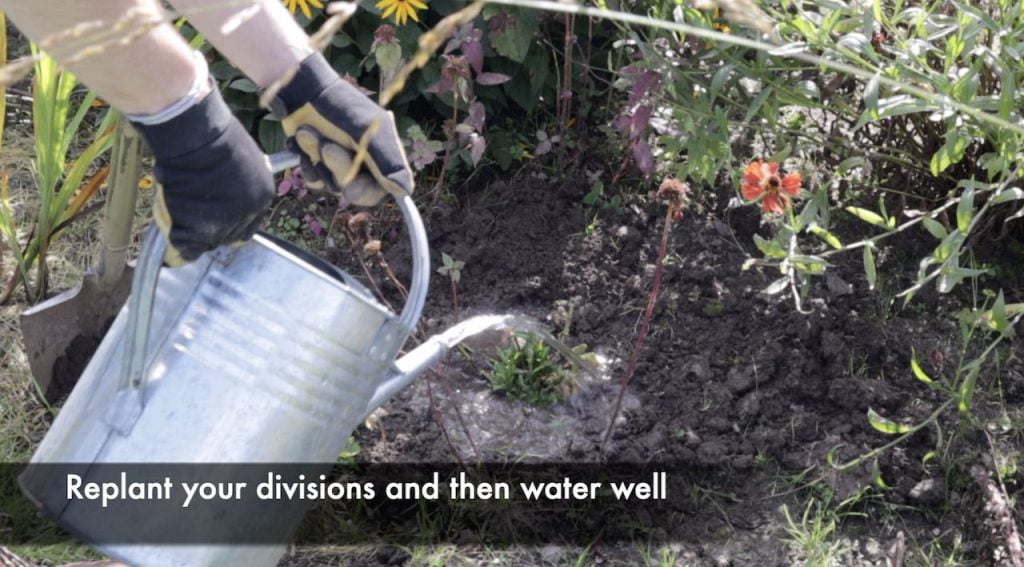
For most herbaceous perennials, the best time to lift, divide and replant is early Autumn or Spring. You want to avoid frost at all costs and abstain from dividing plants when they are in flower. This is because frost makes establishing roots incredibly hard and can kill off new plants.
Secondly, moving plants when they are in flower is when they are at their weakest. They have expended all that energy on producing flowers, so they won't necessarily have the resources to re-establish roots immediately.
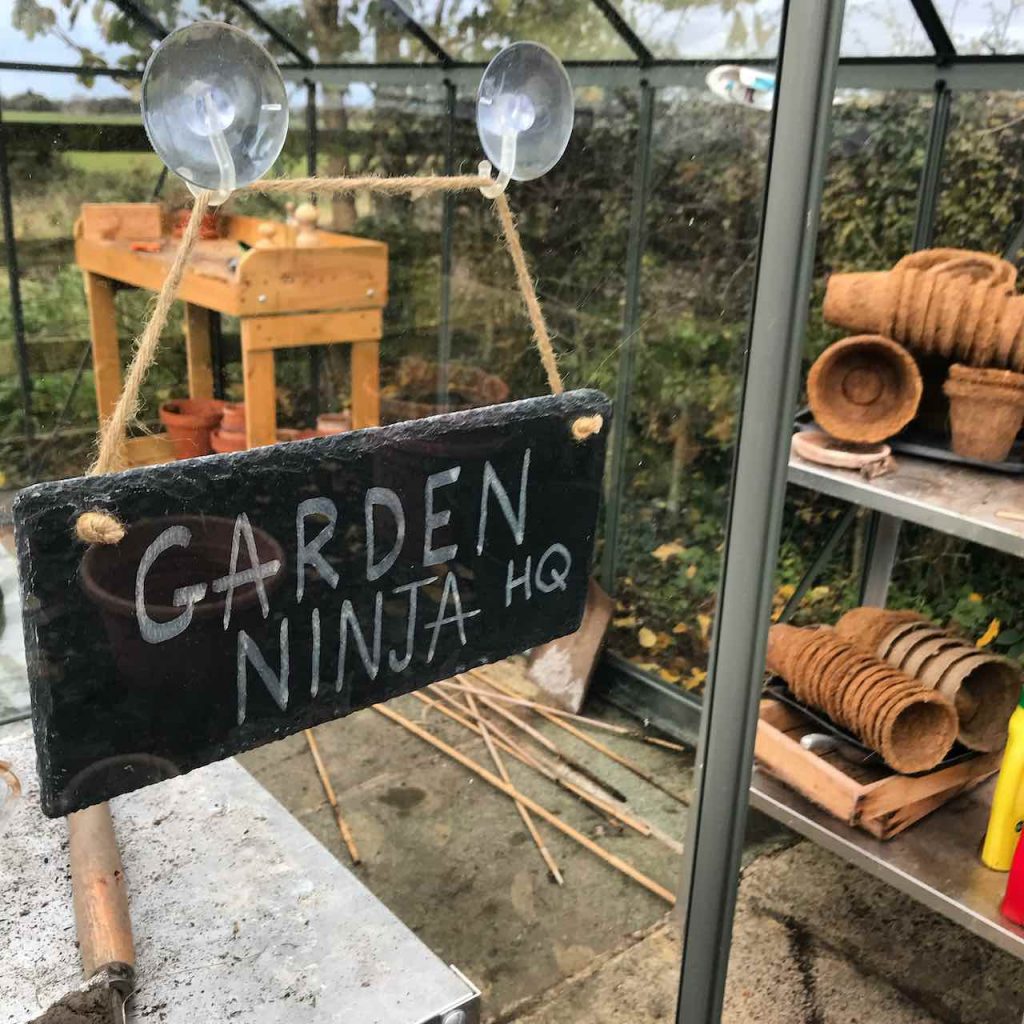
Early Autumn or Spring is the best time for splitting plants.
By moving plants when they are dormant, you reduce the stress placed on them and have a far higher chance of succeeding with their relocation.
It's advisable to divide herbaceous perennials every 3 or so years to encourage plant vigour. Of course, if the plant is healthy and flowering, well you can leave it alone. Ornamental grasses often benefit from splitting every 3 years to stop the centre part of the plant from becoming unproductive.
The main reason for dividing plants is to propagate them and create more copies of the parent plant. If this is the case, you could do it every 2 years, giving a year for the parent plant to recover and bulk up again.
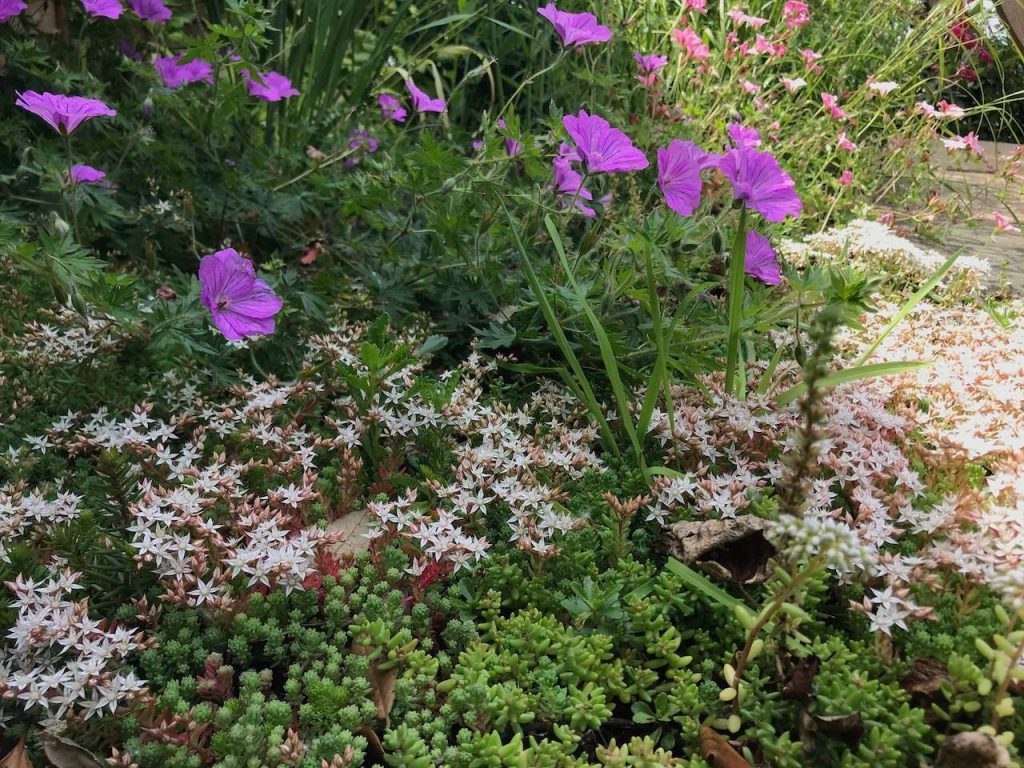
All the above, including Geraniums, Sedum, and Luzula, can be divided easily.
Dividing plants is a really economical and successful way to bulk up your gardens or share your herbaceous perennials with friends and family. The act of division encourages healthy plant regrowth and can often awaken an old, tired herbaceous perennial, particularly grasses!
Although you may feel a bit apprehensive at first, fear not. Plants are incredibly tough, and this is a great way to get to know your most prized herbaceous perennials and become better gardeners!
If you’ve just divided some herbaceous perennials, why not Tweet, Facebook or Instagram me with your pictures? You can also follow me on Youtube where I’ve got plenty of garden guide vlogs.
Happy Gardening!



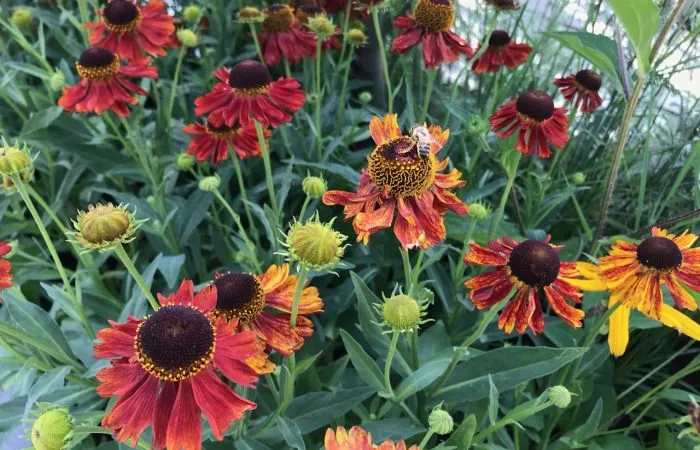

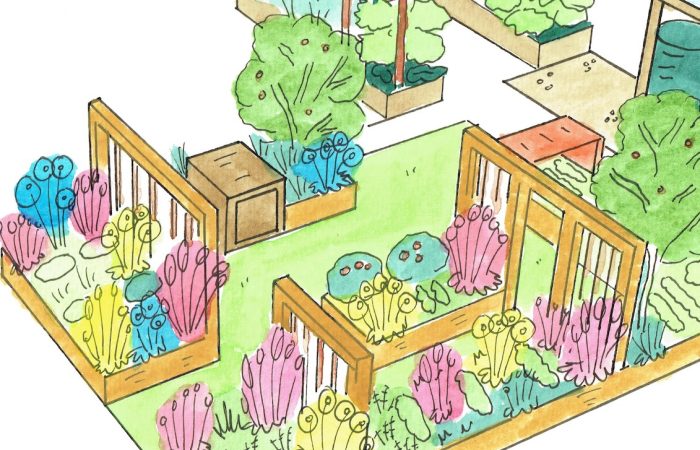

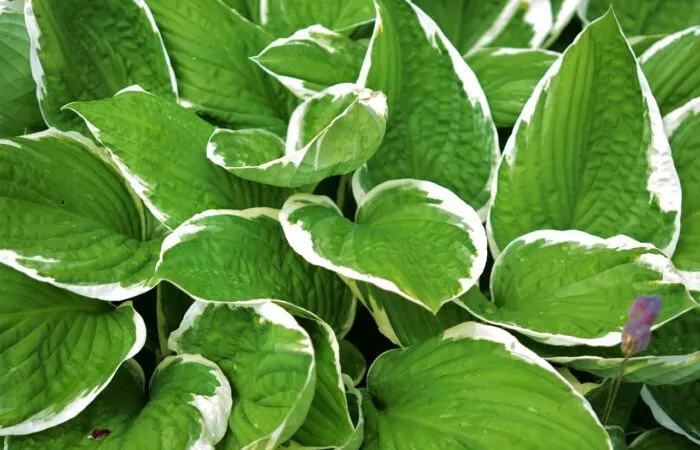
JOIN THE NINJAS

Be the first in line for new Guides, Discount codes and Offers